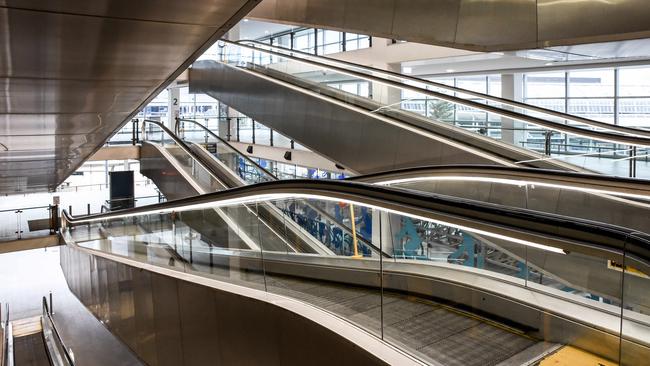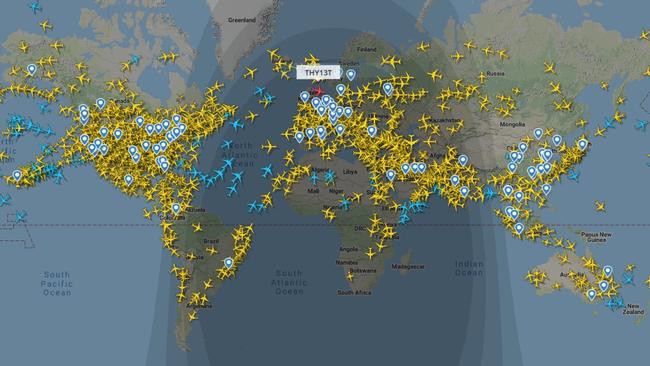Australia rapidly becoming a no-fly zone
Australia’s aviation industry is lagging the rest of the world, with flights at a global low and relatively empty airspace.

Australia’s aviation industry recorded the lowest level of flying anywhere in the world last week as the country remained in the grips of border closures and lockdowns.
Analysis by Citi showed flights in Australia were at 74 per cent below pre-Covid levels, well down on the global average of 33 per cent, and behind every other country included in the research.
The US market was showing the strongest recovery, with flights now at 12 per cent below pre-Covid levels, followed by Europe where flights had recovered from 70 per cent under pre-Covid levels at the end of April, to 30 per cent last week.
Flights operating in China were now at 55 per cent of pre-Covid levels, and India was back to 58 per cent, despite the country’s devastating Delta outbreak earlier this year.
In Japan flying activity was 53 per cent under pre-Covid levels, and South Korea was 56 per cent under what it was at the same time in 2019.
The data was underlined by flight radar images showing Australia’s airspace relatively empty, in contrast to the mass of aircraft over North America and Europe.

It came as a Senate inquiry into the state of Australia’s aviation industry resumed public hearings, with the Tourism and Transport Forum (TTF) and various unions giving evidence.
TTF chief executive Margy Osmond told the hearing Australia’s tourism industry could not survive without aviation and both were on their knees.
“We’re now in a situation whereby 610,000 jobs have been lost from the industry which would normally have about 1.1 million employees, so over half,” Ms Osmond said Monday.
“It’s not looking good for the September school holidays, which will be the fourth set of school holidays that have been a no go for the industry.”
Ms Osmond said there was also great concern over what the critical Christmas holiday period would look like, given the lack of forward bookings.
She said typically Australians were “famous” for booking months in advance for a holiday but not anymore.
“The uncertainty around borders and the complete pain of seeking refunds when things changed, means that people are booking at the very last moment which makes it very hard for the industry to plan,” she said.
“So for the Christmas holidays – how many flights to you put on to the Gold Coast? What provisions do you make for visitors and where are you going to find the people to deliver those services? It’s a real and genuine problem.”
There was also much awareness of the fact other parts of the world were getting back to normal, putting pressure on international airlines to drop Australia from their schedules, Ms Osmond said.
“Before this pandemic, there were 42 international airlines flying into Sydney. It’s only got 12 now,” she said.
“We’re going to have to get those airlines back because it’s more than tourism it affects. High yield perishable produce goes out in the belly of passenger planes, and many goods come into Australia in this way. It has a bearing on a much wider group of industries.”




To join the conversation, please log in. Don't have an account? Register
Join the conversation, you are commenting as Logout